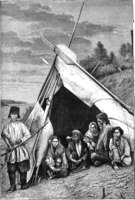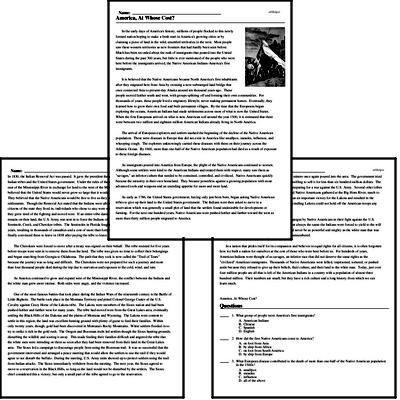America, At Whose Cost?
In the early days of America's history, millions of people flocked to this newly formed nation hoping to make a fresh start in America's growing cities or by claiming a piece of land in the wild, unsettled territories in the west. Most people saw these western territories as new frontiers that had hardly been seen before. Much has been recorded about the rush of immigrants that poured into the United States during the past 300 years, but little is ever mentioned of the people who were here before the immigrants arrived, the Native American Indians-America's first immigrants.
It is believed that the Native Americans became North America's first inhabitants after they migrated here from Asia by crossing a now-submerged land bridge that once connected Asia to present-day Alaska around ten thousand years ago. These people moved farther south and west, with groups splitting off and forming their own communities. For thousands of years, these people lived a migratory lifestyle, never making permanent homes. Eventually, they learned how to grow their own food and built permanent villages. By the time that the Europeans began exploring the oceans, American Indians had made settlements across most of what is now the United States. When the first Europeans arrived on what is now American soil around the year 1500, it is estimated that there were between two million and eighteen million American Indians already living in North America.
The arrival of European explorers and settlers marked the beginning of the decline of the Native American population. There were diseases in Europe that did not exist in America like smallpox, measles, influenza, and whooping cough. The explorers unknowingly carried these diseases with them on their journey across the Atlantic Ocean. By 1600, more than one-half of the Native American population had died as a result of exposure to these foreign diseases.
As immigrants poured into America from Europe, the plight of the Native Americans continued to worsen. Although some settlers were kind to the American Indians and treated them with respect, many saw them as "savages," an inferior culture that needed to be contained, controlled, and civilized. Native Americans quickly became the minority in their own homeland. They became powerless against a growing population with more advanced tools and weapons and an unending appetite for more and more land.




